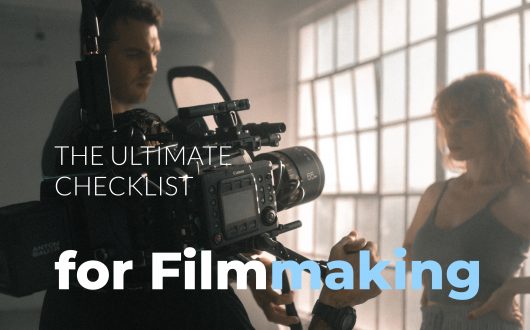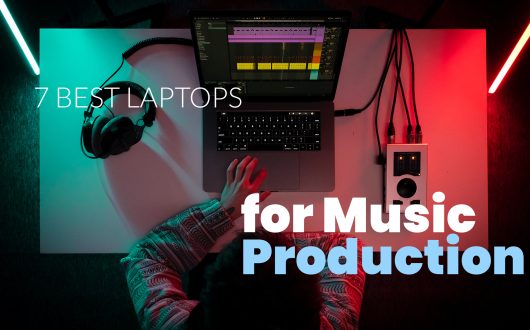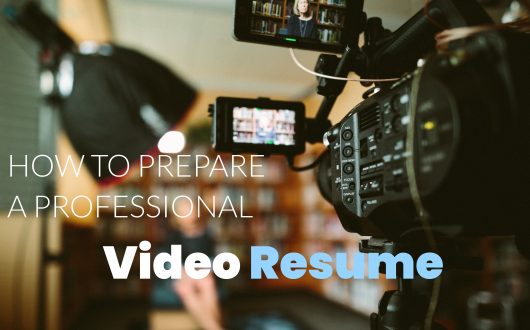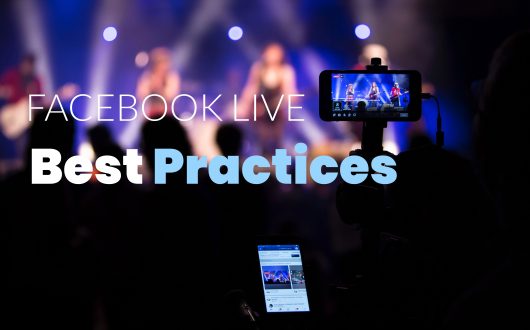
The Audio Buzz Blog
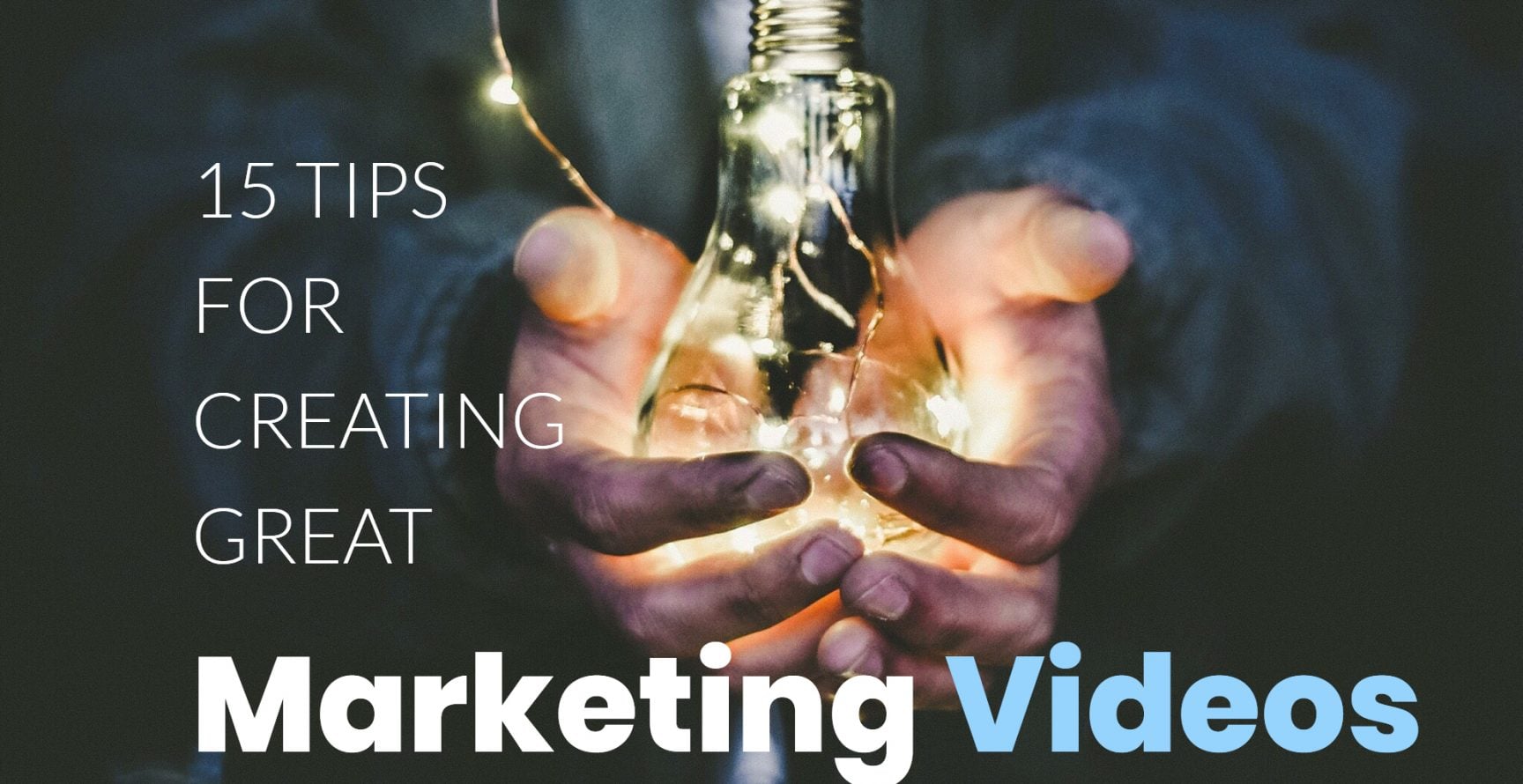
15 Tips for Creating Great Marketing Videos
Creating great marketing videos is easier said than done. There are so many factors that come into play to make a video a success. You must have a strong message, engaging content, an interested audience, and on top of all that, some good luck wouldn’t go amiss. The landscape of successful online content is always changing and fast! Yesterday’s viral hit is today’s flop, and to make it more confusing, sometimes videos that appear to ignore every rule become overnight sensations. Don’t get disheartened; we are here to help it all make a bit more sense. We have compiled our top 15 tips for creating great marketing videos, let’s get into it.
1. Start Strong and Make People Watch
When you decide to create a marketing video, you should already have an end goal, a reason for making the video in the first place.
It doesn’t matter what that end goal is, the purpose of your marketing video is to help you achieve it.
Naturally, in fear of missing out, you will put pressure on yourself to include every single bit of relevant information.
This pressure often leads to ten minutes of information crammed into a two-minute video.
So, here’s a fact you should remember, too much information can be just as damaging (or more damaging) as too little information.
You don’t want to overwhelm viewers; you want to give them enough to stay tuned.
It might sound incredibly obvious, but if no one watches, it doesn’t matter how much information you put in your video.
So, getting people to watch has to be your number one focus.
Take a more straightforward approach, forget thinking about how to reach your end goal (for now), just think about how to get people to watch!
Chances are whatever you do or whatever you sell is already being offered by lots of other people; if not, then you have struck gold.
The most challenging job you have isn’t in letting people know what you do; it’s in convincing people that they should choose you over everyone else.
Consider the massive amount of content available; to compete, you have to entertain in some way, not just inform.
The first step towards convincing people to choose you is making sure they don’t switch off.
So, you need to come up with a strong hook that will pique the viewers’ curiosity.
It doesn’t have to be everything in the first 10-20 seconds, but if you can use that time to make them wonder what’s coming next, you are onto a winner.
2. Make People Remember You
The key to any successful video campaign, once you get people to watch is to make them remember you.
The harsh reality is that no matter how good you are at what you do, people will remember a catchy jingle or silly dance much more than you.
Now, that’s not to say that a marketing gimmick is more important than quality service; these days, it usually takes both to be a success.
Think about the TV commercials that you remember most, some will be great, but some will be downright annoying.
Some TV commercials might even have you thinking who writes this stuff? Or please stop showing this! But when you need car insurance or a new couch, which advertisements does your brain recall first, the very pleasant, unintrusive one or the annoying one?
We would wager that it’s the annoying one! The point is that you never want to be stuck on middle ground, whether people love it or hate it, they have to remember it.
If you can make videos that everyone loves, please do that, it’s much better than being annoying, but you get the idea!
Check out this YouTube compilation of some of the most annoying TV commercials that are well remembered.
3. Tell a Story, Not Just Facts and Figures
There are a few different ways that you can approach video marketing.
As we keep saying, it’s about convincing the viewer that they need you or will benefit from what you have to offer.
What potential customers don’t want to see is a video that is packed with information but isn’t relatable.
Think of it as you would think of watching a movie, what makes an audience connect most to a film?
It’s when they feel something for the characters, whether it’s empathy, they have been in the same situation, or they just think what if I was in that situation.
There has to be something that the audience can relate to, and facts and figures alone won’t do that.
Maybe you can tell your story, some history on how you got started, or how you overcome if that will resonate with your viewers.
Alternatively, you can tell a story that relates to your city, country, or industry in general.
If that doesn’t appeal, just make a story up, create a scenario that either makes people laugh or cry, and relate it to your product or service.
If you can make viewers feel anything or inspire them, you won’t go far wrong.
Here’s a fantastic example of video marketing with a story from Nike’s Find Your Greatness campaign.
4. Add Music to Your Video
Adding music to your video can bring it to life, and obviously, it would be our top tip! ( Not that we are biased at all).
Nothing creates or highlights an atmosphere quite like the right music.
But, we do mean the right music, not just any music, luckily Audio Buzz is all about finding the perfect track.
Whatever the tone of your video, music can help drive home your message.
When a movie leaves you feeling inspired or hopeful, there’s usually some uplifting music, even if subtle, that’s nudging your emotion in the right direction.
The same applies to any emotion; music will help the film guide the viewer.
A marketing video may not be the same as a movie, but it follows the same principles regarding music.
The trick is to find the right music and use it in the right place, sound difficult?
We have a fantastic blog post about finding the perfect music for your video; you should check it out.
When it comes time to choose your music, make sure you use our exclusive video preview tool to guarantee the perfect result.
5. Add CTAs to Your Video
A call to action is a way to ask or encourage the viewer to do something directly.
CTAs are vital in video marketing because, if your video does its job, the viewer should want to be part of whatever you are doing.
A good call to action will make it easy for them to make that choice.
So let’s look at how you can add a call to action to your video.
YouTube is, by far, the most popular video hosting platform, and there are a few ways to add CTAs on YouTube.
The first of which is adding cards to your video at chosen positions.
Cards can contain polls, links to websites, and more, find out more about cards and how they can increase your click rate.
Another cool YouTube feature is an end screen, which is ideal for gaining new subscribers.
End screens can be added to the last 20 seconds of your video, where you can cement your message.
Check out YouTube’s guidelines for using end screens.
You can also add CTA overlays to your YouTube video that can be used as a clickable link of just a reminder at any point in your video.
For example, they can encourage viewers to subscribe, follow, purchase, share, etc.
Timing is Everything
Adding a CTA at the start of your video and hoping for the best will get you nowhere.
It’s a fact that CTAs are more effective from the middle to the end of your video, but particularly at the end.
We don’t need a study to prove that. It’s simple, no one wants to take action when they don’t know anything about you yet.
Try experimenting with different times and positions for your CTAs.
6. Optimize Your Video for Search Engines
Search Engine Optimization can be a bit of a headache for some people, and understandably so, it’s not the fun part of any project.
With that being said, it’s a crucial part of any video marketing campaign, so let’s take a look at some things you can do.
Make Your Thumbnail Enticing
Thumbnails are more for the human eye than the search engine, but it’s one of the most important steps towards a successful video.
A custom-designed thumbnail will always be better than an automated, random screen capture.
There is a phrase, don’t judge a book by its cover; unfortunately, online videos are very much judged by their cover.
Imagine people google the term how to bake the perfect birthday cake; that search is going to produce lots of video results.
If one video has a thumbnail showing a beautifully decorated birthday cake and another shows a kitchen with nondescript items lying around, which do you think people will choose?
Getting your thumbnail right is part of the number one rule of video marketing, which is to make people watch.
Here’s an example of a good video thumbnail versus a bad one.


Photo by Kipras Štreimikis on Unsplash
Did you prefer the delicious cake image or the random (and blurry) guy in his kitchen getting ready to bake?
Make Your Title Interesting and Search-Friendly
Naming your video seems like it shouldn’t be too much trouble, but there’s a lot in a name.
First of all, it has to be easy to find, so make it something that people are likely to type in a search engine.
It doesn’t need to be exact, but the closer you get to common search queries, the more relevant the search engine will think your video is.
Let’s keep the same example and use the title – How To Bake The Perfect Birthday Cake, that’s fine; people are likely to search for that.
It’s also a nice length, it’s direct, and it contains the keyword Perfect Birthday Cake.
Don’t take that same video and name it Do You Want To Learn How To Bake A Birthday Cake? I’ll Teach You To Bake The Perfect Birthday Cake!
That’s far too tedious, it’s not catchy enough, and it’s doubled down on keywords.
Never go too far with keywords, if you have the focus keyword in your title and it’s catchy, you’ve got it, so leave it alone.
Tag it if You Can
Whether it’s YouTube or another video platform, you need to add tags to your video.
As a brief explanation, adding tags is another way to help people find your video.
If we retake the same example video, we could add tags like home baking, birthday party, birthday cakes, home cooking, and so on.
Those tags are all part of your subject matter or very close to it, despite not being in your video title.
With the right tags, you can now be relevant in more searches even if your title isn’t the perfect match.
Also, on many platforms, users can search for videos by tag, if they aren’t sure exactly what they want.
Don’t be tempted to spam your video with tags that aren’t relevant to your video just because they are searched often; it will do far more harm than good.
Transcribe Your Video
Transcribing your video is a way to make it easy for people to watch your video without disturbing anyone.
For example, if someone is at work and sneaking some social media time ( We don’t endorse that! ), they can read the captions with the sound off.
On a more serious note, it makes your video more accessible to people who are hearing impaired, too.
Now, you might be thinking you’ve worked so hard to get your video just right, why would you want anyone watching it with the sound off?
Well, you wouldn’t, but it’s not going to stop people watching with the sound on when they can, it’s just going to increase your views when they can’t.
Here’s an awesome tutorial on transcribing your video.
If you are publishing your video on YouTube, you should check out these guidelines on adding a transcription file.
It’s also a good idea to transcribe some of your audio on the web page where you embed your video.
The reason for doing this is that it’s more crawlable text for search engines to find.
Pick out some sections of your video that you feel are the most important and write them out on the page.
Add an Interesting Video Description
A video description is another chance for you to convince people to click rather than scroll past.
So use the space wisely, think about your keywords but don’t overload it with them.
Make it interesting and concise; do not just repeat the title of your video!
Don’t Expect SEO to Work Miracles
OK, now you know how important SEO is to your video, but it isn’t the be-all and end-all.
Ultimately, there is no substitute for high-quality content, so don’t cut corners and expect keywords, tags, and thumbnails to do all the work.
7. Don’t Be So Serious
Even if you have a serious message or serious business, it doesn’t mean your video can’t be lighthearted.
Humor or flat out comedy is often the best way to engage with viewers, and something funny is exceptionally shareable.
You can be sure if you can make people laugh, your video will be shared around homes, schools, and workplaces the next morning.
If you do use humor in your video, one of the best ways to do so is to create a funny situation that could arise should someone not use your service/product.
Alternatively, create an entirely fictional scenario.
Take a look at this Christmas commercial from KFC.
It combines an awesome soundtrack and a hypothetical altercation between a chicken and Turkey.
We don’t want you just to think about humor; what we are really getting at is don’t be afraid to go against the grain.
There are no rules, and you shouldn’t be scared to do the unexpected and don’t take yourself too seriously.
8. Understand Your Target Audience
We will guess that if you are making a marketing video, then you already know who your target audience is.
If you don’t, then you probably need to go back a few steps!
With platforms like YouTube and Google AdWords, you can be very specific about who you want to see your video.
You can filter by age, gender, interests, previous videos watch, and much more.
Take advantage of these tools and be as specific as you can be, without narrowing your audience needlessly. Unless you have money to burn to promote your video, you will want to get this part right.
9. Engage on Your Audience’s Level
When we say engage with your audience, we want you to see it from their point of view.
Let’s say you have identified your target audience as men and women over sixty, who are interested in gardening.
It’s highly unlikely (though possible) that a video with a gangster rap theme is going to grab their attention.
If you find yourself in that situation, then you have a clear disconnect between your content and your audience.
This disconnect means one of two things, either your content or your audience is wrong.
If you think your content is perfect for your brand and service, then you need to rethink your target audience.
However, if you are sure that your target audience is right, then you need to start thinking about aligning your content with the interests of your audience.
10. Check Your Data Then Check it Again
We are firm believers that the creative is the most important thing. If the creative isn’t right; it doesn’t matter who it reaches.
Similarly, if you don’t reach anyone, it doesn’t matter how good your video is. Catch 22, right?
The data we are talking about is the trends in video marketing. In our current social media driven climate, it’s often thought that short-form videos work best.
It makes sense to feel that way when people have so much content available, and everyone seems to want everything right here, right now.
However, contrary to that popular opinion, a study shows that our attention span is not getting shorter.
Despite the majority of video content being short-form, long-form content has a place with the right audience.
Trends are called trends for a reason; they don’t last forever. So, research properly and give your video the best chance of competing.
11. Create Content For a Complete Marketing Funnel
When you create a marketing video, you shouldn’t just be thinking about video hosting platforms.
You need to be sharing your valuable content across your entire marketing funnel. That means all of your social media platforms, which might mean some smart editing.
We just spoke about how long-form videos could be the way to go right now, but that doesn’t suit every platform.
For example, Instagram isn’t the ideal setting for a ten-minute video.
Users act differently on different social platforms, too, meaning each platform should give varied behavioral statistics.
You need to make sure you have your video in the optimal format for each platform. To do this, you might end up with a ten-minute video on YouTube, a sixty second version on Instagram, and various other versions elsewhere.
It’s a good idea to think about this early on while you are still making your video.
If you do that, you can prepare your content in a way that makes it easier to cut and paste sections, to create varied length versions without losing the overall message.
12. Ride the Wave
Anytime you do something creative, you want to be as original as you can be.
But, there are times when it pays to be a little less unique.
When something becomes so popular with a whole generation of fans, whether it’s a movie or a song, you will see others jumping on the bandwagon.
Just to be clear, we are in no way suggesting that you copy someone else’s work, but it leaves the door open for parody.
Check out this Geico commercial that beautifully parodies every slasher movie ever.
Whether you take a comedic or serious approach to a popular topic, it can be a fantastic way to connect instantly with a large audience.
Although, we must advise that you do it tastefully and legally, don’t get sued!
13. Make the Most of Technology
This bit of advice is about following trends again, this time in regards to technology and creative techniques.
Many years ago, The Matrix became one of the first movies (maybe even the first) to use 360 degrees camera rotation.
Some of you may be too young to remember, but this iconic scene amazed everyone.
Soon after, it seemed like every other video used the same technology.
That kind of thing, although more accessible now, may be out of your reach, but there are always ways to spice up your content.
Considering the editing you can do on free apps and video editors, you will always have some technology available.
Take advantage of it, but keep it tasteful.
14. Collaborate with Influencers
In almost any business, collaboration and affiliation are essential.
Before you even think about collaborating, make sure that it’s sensible.
One of the worst things you can do is attach your name to something just for the sake of it when it makes no sense.
Ideally, you want to collaborate with people in your field who do something slightly different.
Let’s take a musical analogy and imagine you are a singer looking to collaborate on an album project.
It’s unlikely you want to find another three singers unless you are bringing back the barbershop quartet.
You’ll likely want to team up with a producer, mix engineer, and booking agent.
In that scenario, each person offers something to the other, and that’s the key to a great collaboration.
When you identify someone you’d like to collaborate with, don’t approach them without a plan.
Understand what they can do for you, but equally, understand and explain what you can do for them.
15. No Budget? No Problem!
Don’t be put off by a lack of funds; there’s always something that you can do.
The upside of there being so much online content is that there are many ways to create content.
If you have a high-end video camera or DSLR, that’s fantastic, but don’t forget you can record 4k video on an iPhone, and don’t ever think that’s not good enough.
Make the most of what’s available to you; jazz virtuoso Jacob Collier recorded his early viral music videos on an iPad, which are terrific.
It was a reasonably recent trend to record poor VHS-style quality or digitally degrade quality through an app.
The band Vulfpeck made their name off the back of their low-budget, low-quality home videos.
Yes, that was an excuse for us to end things with some awesome music, but the point is that nothing is impossible!




